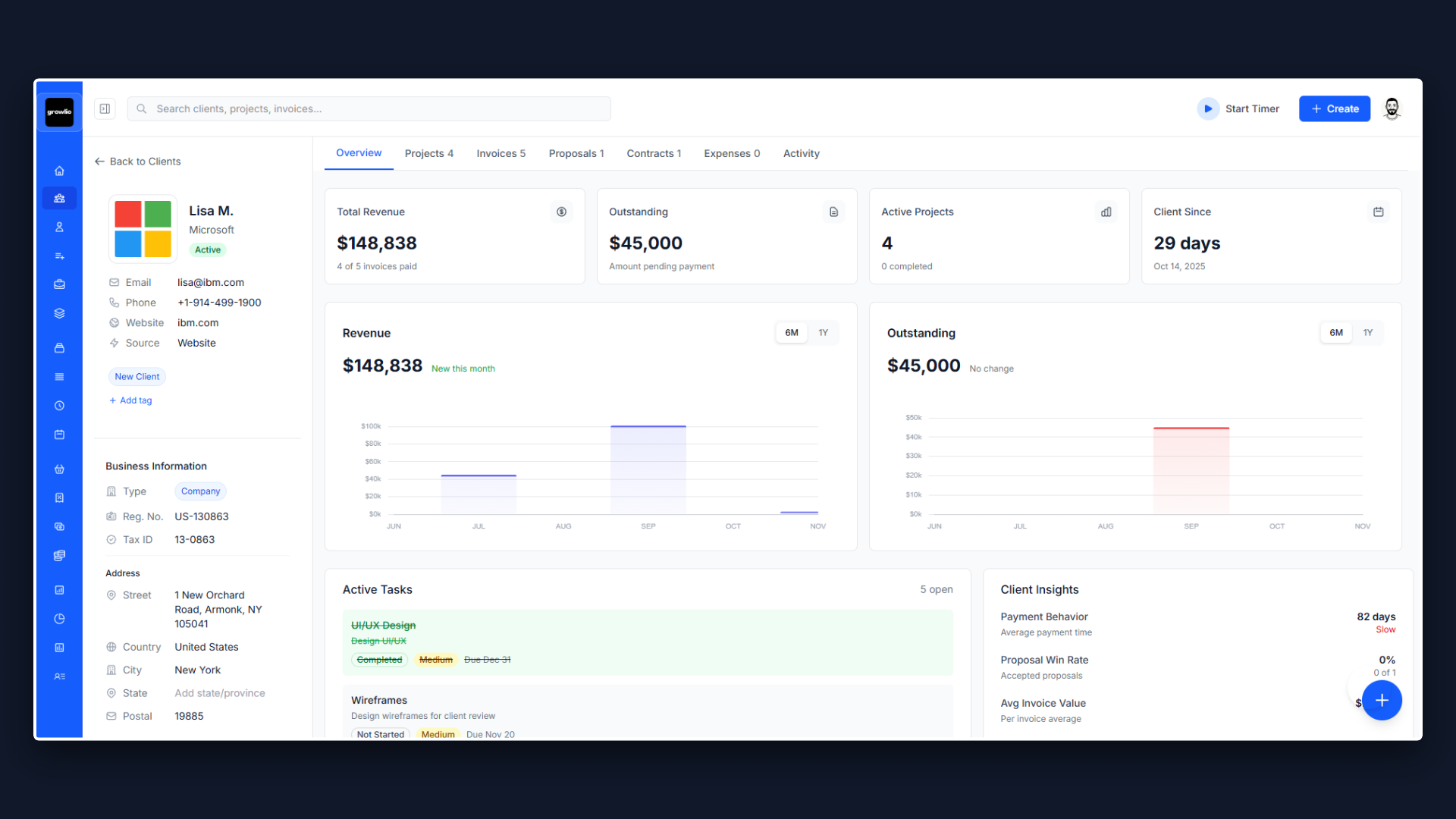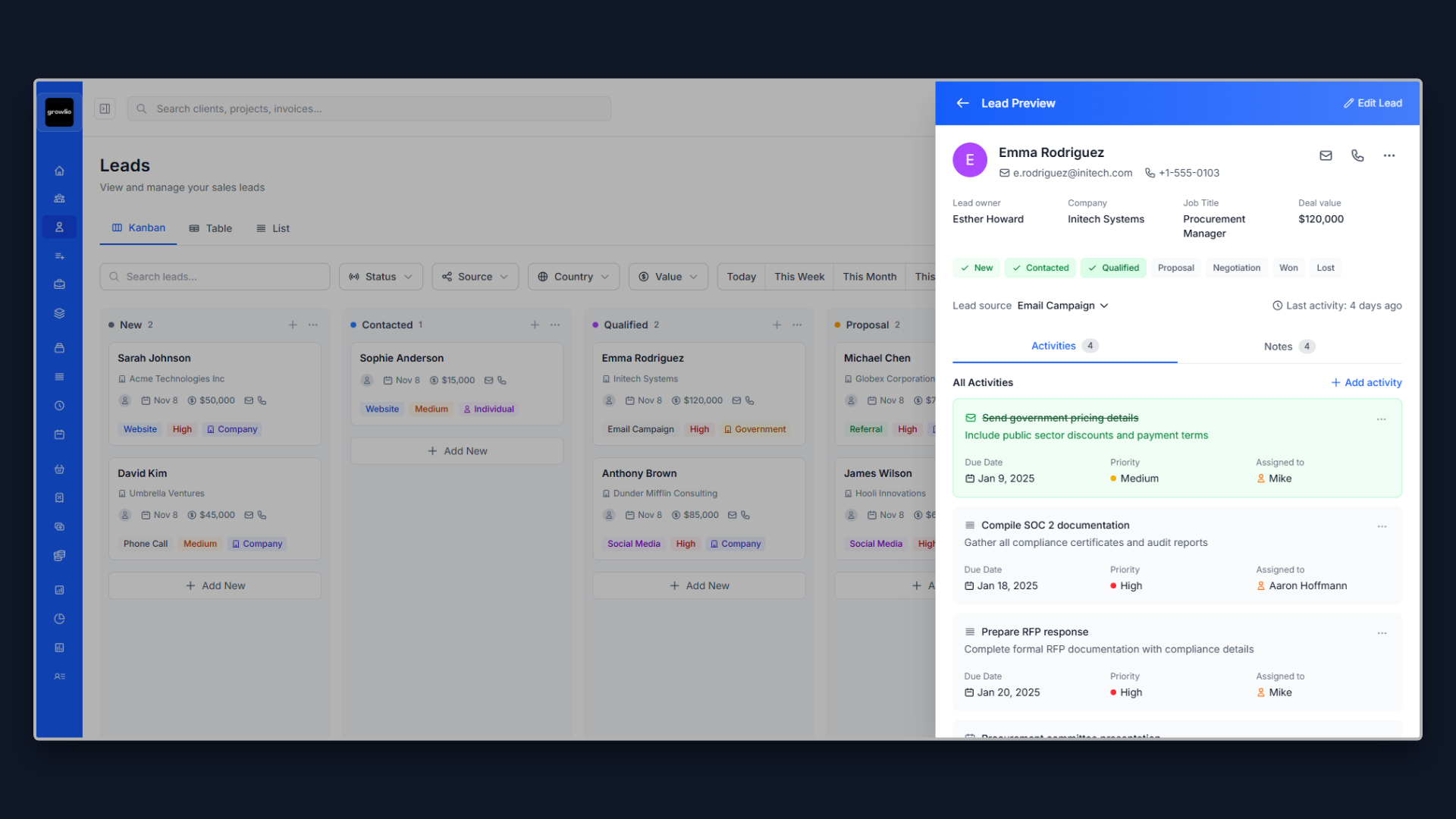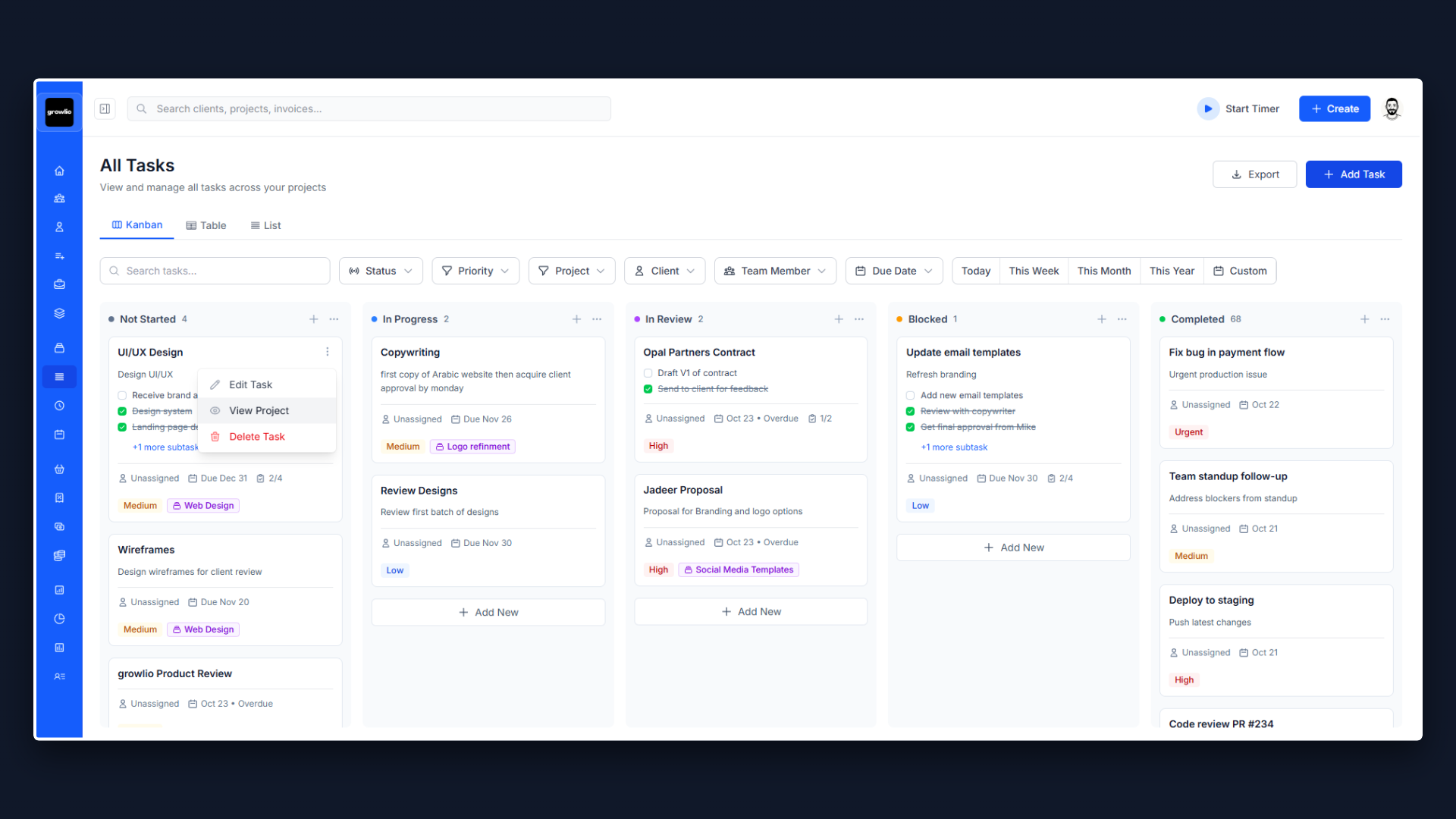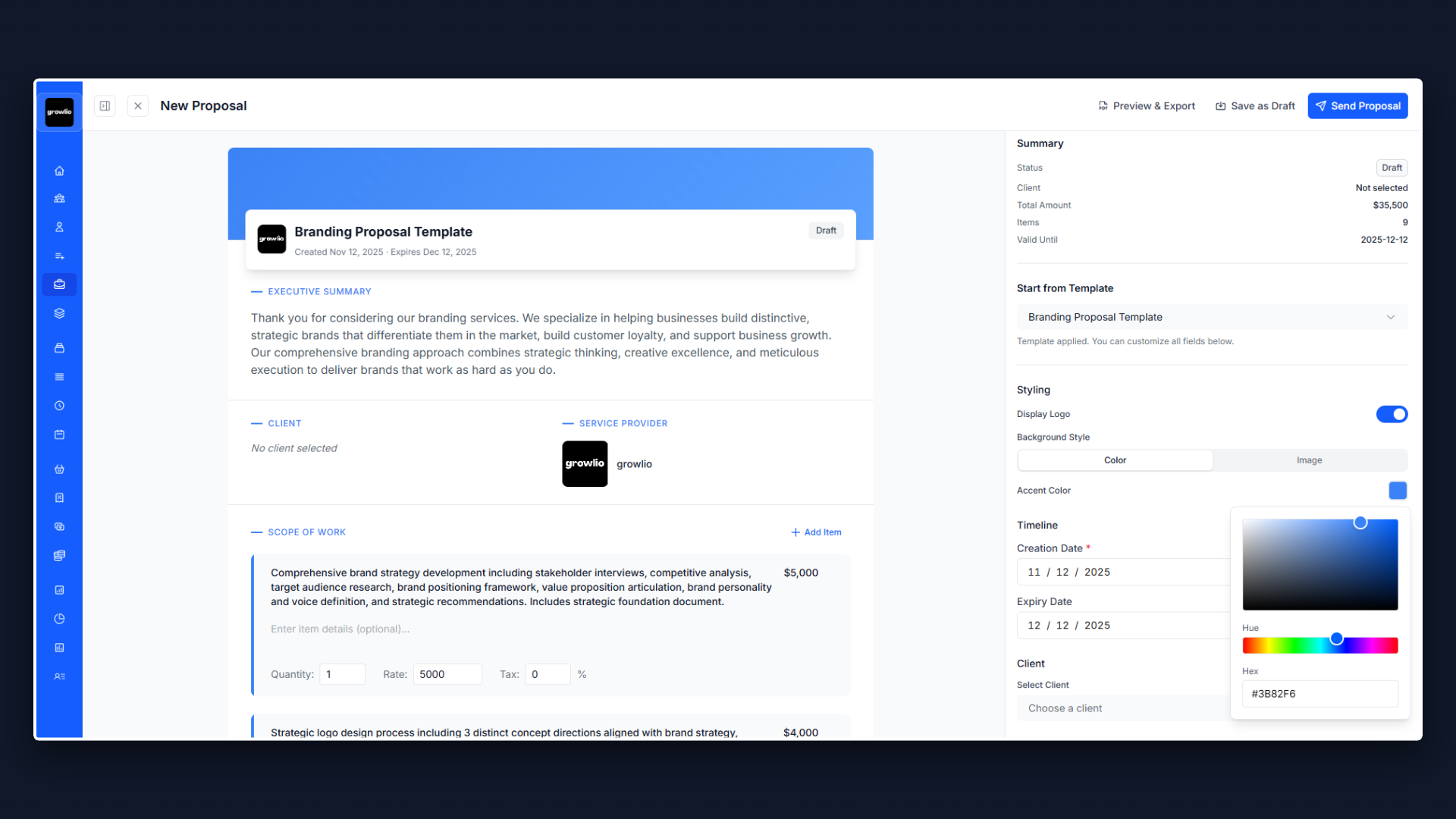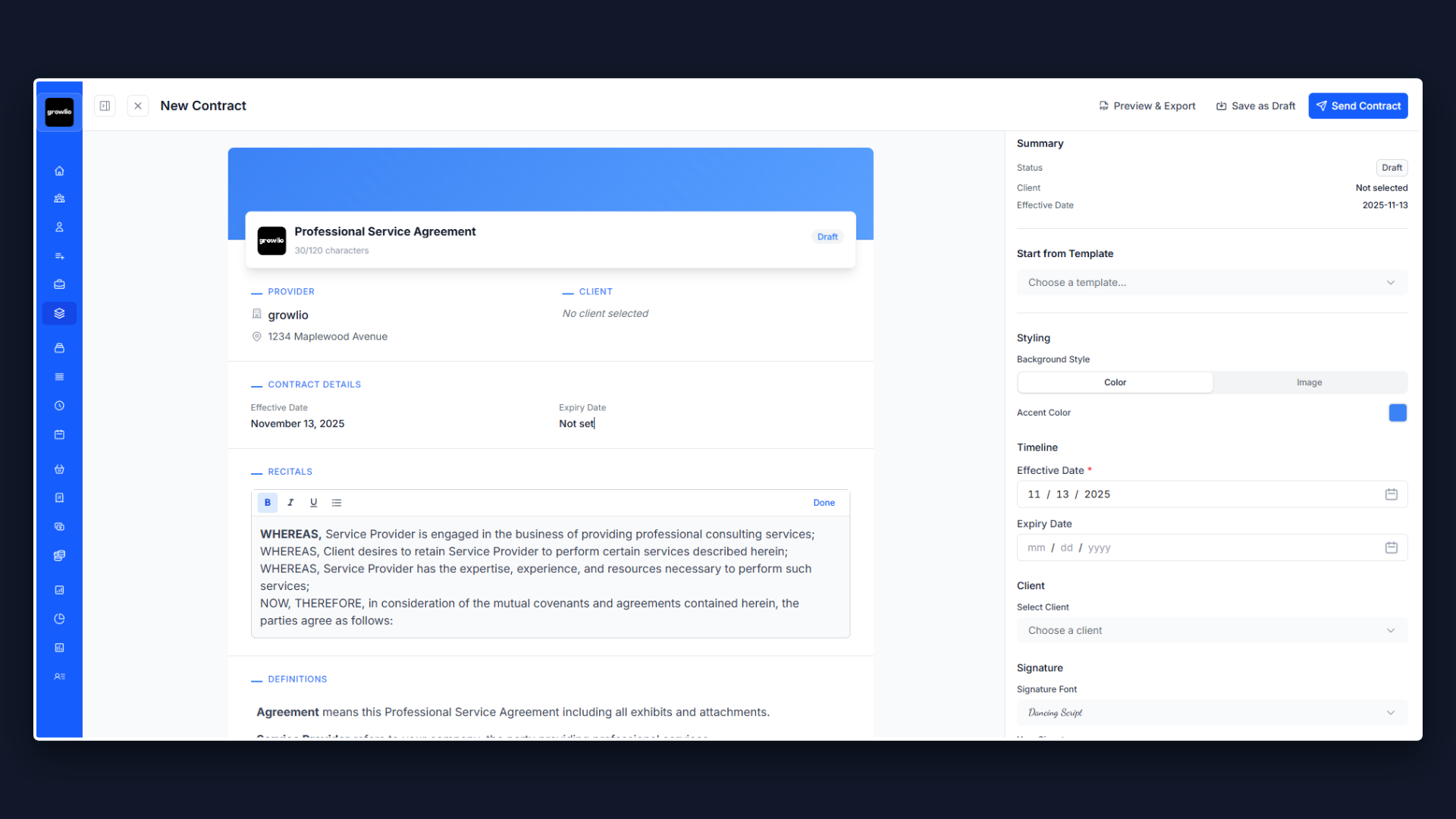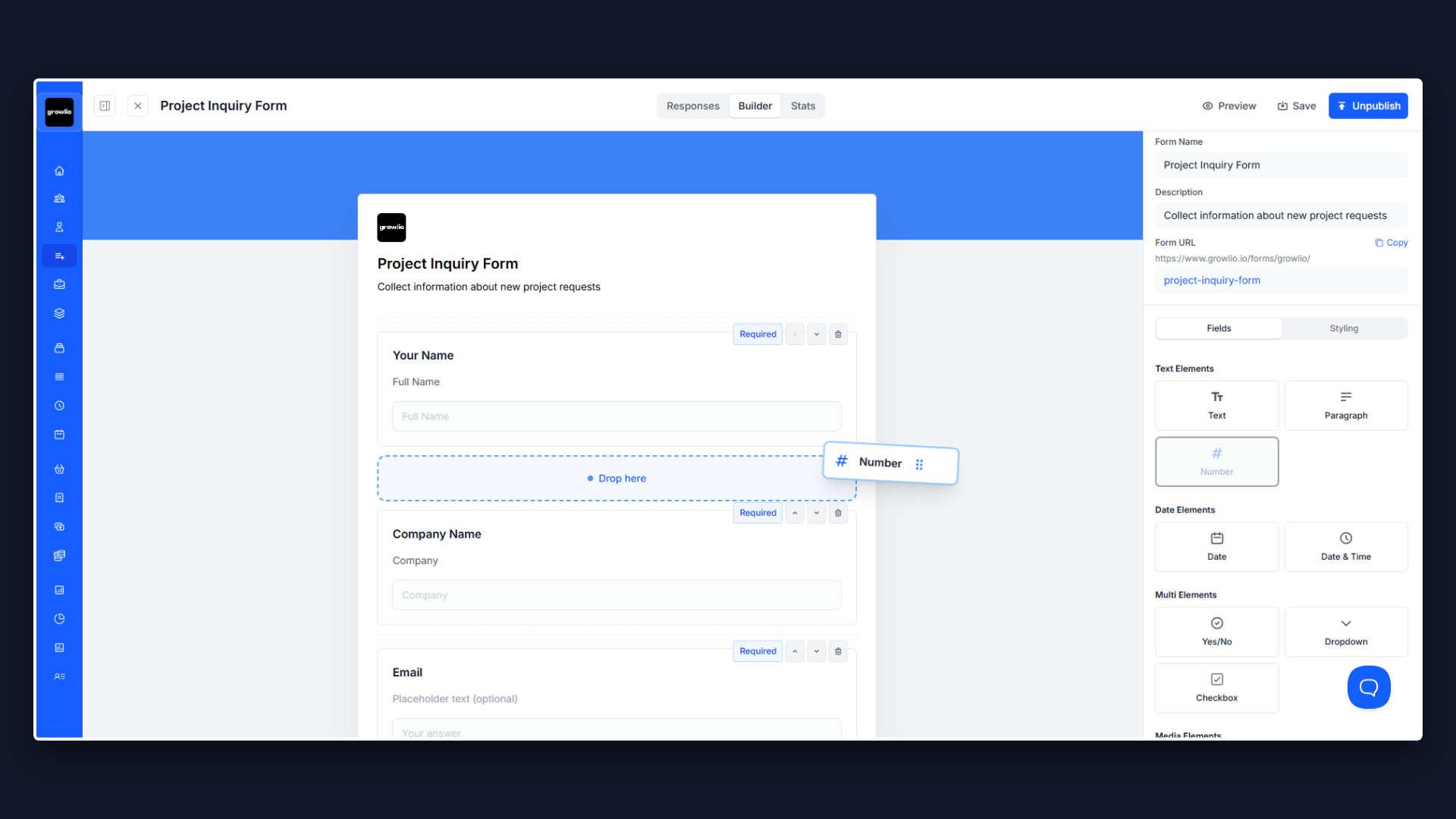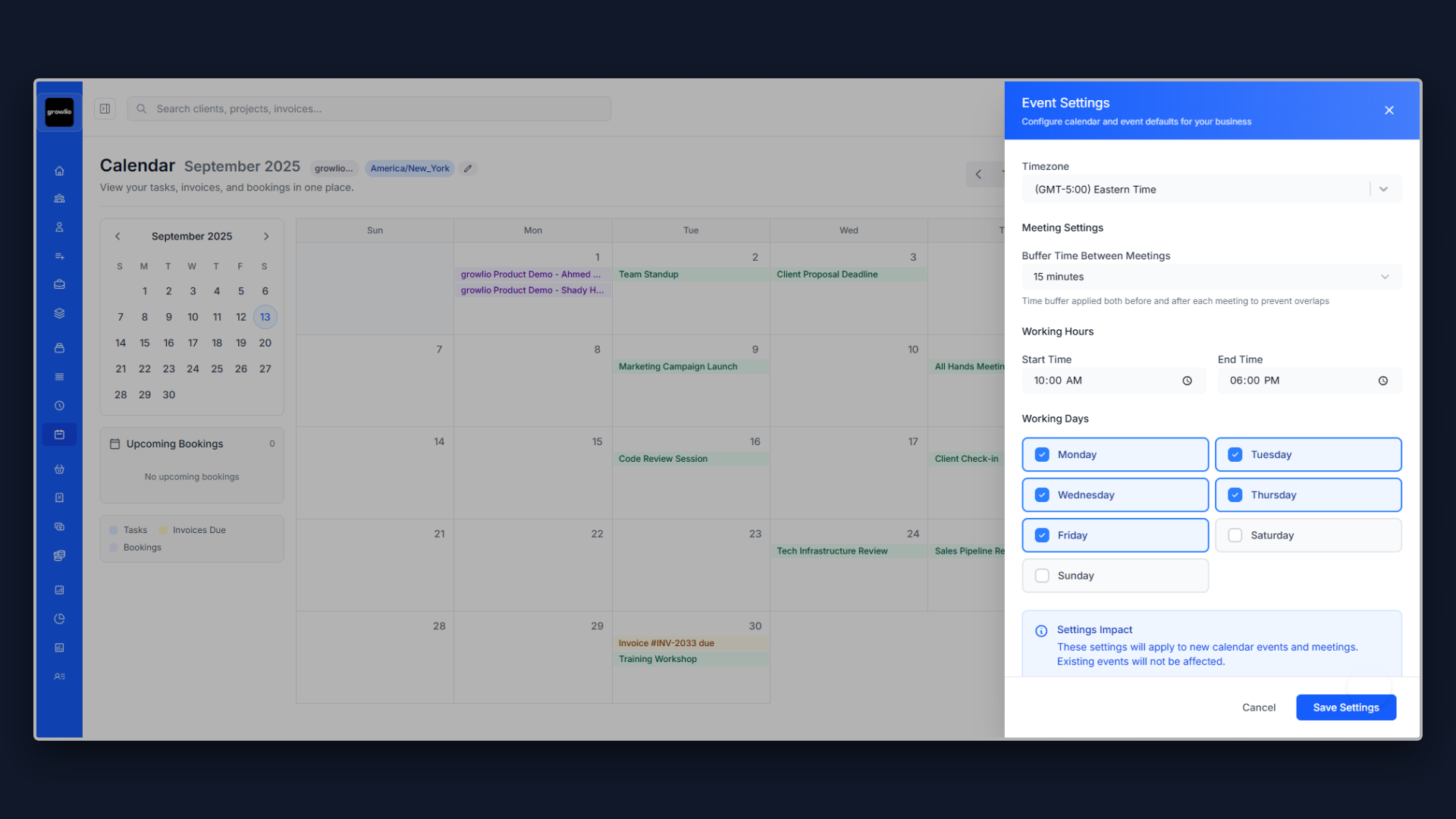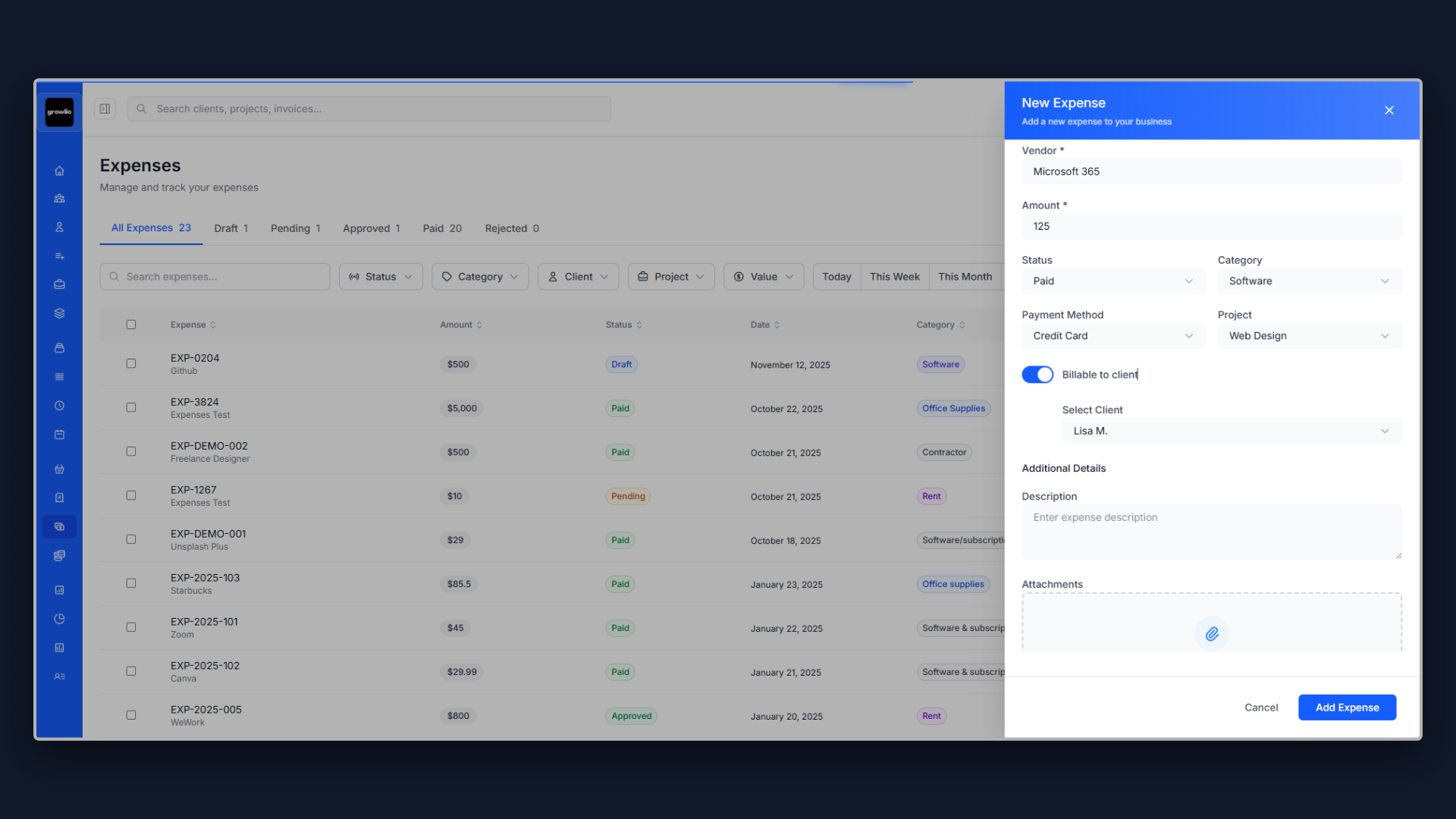Why Your Graphic Design Proposal Makes or Breaks Your Business
As a graphic designer or creative agency, you know that professional design increases credibility by 75% and that businesses with consistent, quality design materials see 33% higher revenue growth than competitors with poor design. But here is the harsh reality: even if you are exceptional at creating beautiful, effective designs, you will struggle to win clients if your proposals do not demonstrate your value clearly.
The graphic design industry generates over $50 billion annually, with businesses increasingly recognizing that design is not decoration—it is strategic communication that drives results. Yet many talented graphic designers lose projects to competitors who simply write better proposals. This has nothing to do with your design skills and everything to do with how you present them.
Your graphic design proposal is your first impression, your sales pitch, and your contract all rolled into one document. It needs to educate prospects who may not understand design value while simultaneously proving you are the expert they need. This is a delicate balance that many get wrong.
1. Start With the Client's Current Design Problems, Not Your Services
The biggest mistake graphic designers make is leading with a list of services: "We offer brochure design, social media graphics, presentations..." Your prospect does not care about your services yet. They care about their problems.
Start your proposal by demonstrating you understand their specific design situation. Are their current marketing materials outdated and unprofessional? Do they lack visual consistency across channels? Are they using DIY designs that hurt their credibility? Do they have no design resources and are cobbling things together? Are they losing deals because their materials look amateurish compared to competitors? Address these pain points explicitly.
For example: "Our analysis shows your current marketing materials lack professional design and visual consistency. Your brochures, presentations, and social media graphics use different fonts, colors, and styles—there is no cohesive brand identity. Meanwhile, your top 3 competitors have polished, professional design across all touchpoints that communicates credibility and market leadership. Research shows prospects judge your business credibility within 50 milliseconds based on visual design. Professional, consistent graphic design could increase your close rate by 25-40% by positioning you as the premium, trustworthy choice in your market."
This approach immediately shows you have done your homework and understand what is at stake. Now they are ready to hear your solution.
2. Include a Design Audit to Demonstrate Your Expertise
Nothing builds credibility faster than showing you have already analyzed their current design materials. Include a brief audit section in your proposal highlighting 3-5 critical issues:
Visual Quality Issues: Current materials appear amateurish or DIY (created in Canva or PowerPoint by non-designers), poor typography choices (too many fonts, poor hierarchy, hard to read), inconsistent or inappropriate color usage, low-quality stock photos or clipart, outdated design aesthetics from 5-10 years ago.
Brand Consistency Problems: No visual consistency across different materials (every piece looks different), different logo variations used inconsistently, random fonts and colors with no system, no design templates or brand standards, materials do not feel like they come from same company.
Strategic Communication Gaps: Design does not communicate your value proposition clearly, poor visual hierarchy makes key information hard to find, designs are cluttered and overwhelming rather than focused, materials do not target your ideal customer demographic, calls-to-action are weak or missing entirely.
Technical Deficiencies: Low-resolution images that look pixelated, incorrect file formats for intended use (JPG when PDF needed), poor print specifications leading to quality issues, not optimized for digital vs. print applications, files are disorganized with poor naming conventions.
This mini audit serves multiple purposes: it proves you know what you are doing, it creates urgency by highlighting problems, and it makes your proposed solutions feel essential rather than optional.
3. Break Down Your Design Process Into Clear Phases
Graphic design projects vary widely, but your proposal should clearly outline your process for the specific project.
Phase 1: Discovery & Strategy (Day 1-3)
Client questionnaire about goals, audience, and preferences, review of existing brand assets and materials, competitive design analysis in your industry, target audience and messaging strategy, creative direction and design approach, mood boards showing visual direction.
Phase 2: Initial Design Concepts (Day 4-7)
Development of initial design concepts or layouts, 2-3 design directions for primary deliverable, presentation-ready mockups in context, written rationale explaining design decisions, design elements that can extend across other materials.
Phase 3: Refinement & Iteration (Day 8-12)
Client feedback on initial concepts, 2-3 revision rounds to perfect the designs, refinement of typography, colors, imagery, and layout, extension of design system to additional materials, proofing for accuracy and quality.
Phase 4: Finalization & Delivery (Day 13-15)
Final design approval and sign-off, preparation of print-ready files with proper specs, preparation of digital files optimized for use, source files and organized asset delivery, brief guidelines for using the designs correctly.
This phased approach makes the design process feel manageable and sets clear expectations for timeline and involvement.
4. Set Realistic Expectations About Timeline and Revisions
One of the fastest ways to lose trust is overpromising results. Clients appreciate honesty about design timelines and revision processes.
Be explicit: "Professional graphic design requires strategic thinking, creative exploration, and refinement. Timeline depends on project scope—a simple one-pager might take 1 week while a comprehensive brand collateral suite might take 3-4 weeks. We will provide a specific timeline based on your exact deliverables."
Provide a realistic projection: "For a typical marketing collateral project, you can expect: Days 1-3: Discovery, strategy, and creative direction established. Days 4-7: Initial design concepts presented for your review. Days 8-12: Your selected direction refined through revision rounds. Days 13-15: Final files prepared and delivered. Total timeline: 2-3 weeks depending on project scope and your feedback turnaround."
Address revisions clearly: "Our packages include 2-3 rounds of revisions on the approved design direction. Revisions mean refining the chosen design—adjusting colors, typography, layout, imagery. They do not mean creating entirely new design directions or adding new deliverables beyond original scope. This structure ensures focused refinement while keeping projects on timeline and budget."
These clear parameters prevent scope creep and set professional boundaries.
5. Explain Your Design Strategy and Creative Approach
Many clients do not understand what makes design effective beyond aesthetics. Use your proposal to educate them on your strategic approach.
Explain that effective design is: strategically aligned with business goals (not just pretty pictures), audience-focused (designed for your target customer, not personal preferences), visually hierarchical (guiding the eye to most important information first), purposeful with every element serving a function, brand-consistent while allowing creative expression, and balancing creativity with functionality and readability.
Outline your design principles: "We design guided by proven principles: clear visual hierarchy and information architecture, strategic use of white space (not cluttering every inch), color psychology appropriate for your message and audience, typography that is both beautiful and highly legible, imagery that is authentic and resonates with your audience, composition and layout that guides the viewer naturally, and cultural sensitivity and inclusivity in our visual choices."
Give specific examples: "For a B2B technology company, we might use clean, modern design with ample white space, blues and grays for trust and professionalism, and photography showing diverse professionals collaborating. For a children's education brand, we might use bright colors, playful illustrations, rounded friendly typography, and imagery showing joyful learning moments. Design is not one-size-fits-all—it is strategically customized for your brand, industry, and audience."
This demonstrates you are a strategic designer who understands business context, not just someone making things look nice.
6. Address Specific Design Deliverables and Applications
Clients need clarity on exactly what they will receive. Be specific about deliverables for their project.
Outline common design deliverables: "We create comprehensive design across formats: Print Materials (brochures, flyers, postcards, posters, business cards, letterhead, folders, sell sheets), Digital Graphics (social media graphics, email headers, website graphics, digital ads, banner ads), Presentation Design (PowerPoint, Keynote, Google Slides templates and custom decks), Marketing Collateral (one-pagers, case studies, white papers, ebooks, infographics), Event Materials (trade show graphics, signage, banners, booth design, name badges), Packaging Design (product packaging, labels, boxes, bags), and Branded Templates (customizable templates for ongoing use by your team)."
Explain deliverable specifications: "For each deliverable, you will receive: final design in appropriate file formats (PDF for print, PNG/JPG for digital, source files for editing), print-ready files with proper bleed, trim, and color specs if applicable, multiple sizes or formats if needed (business card front/back, social media square and vertical), source design files (InDesign, Illustrator, Photoshop files), and brief usage guidelines for that specific piece."
Address print vs. digital: "Print and digital have different requirements. Print requires CMYK color mode, 300 DPI resolution, bleed areas, and specific file formats (usually PDF). Digital requires RGB color mode, 72-96 DPI, optimized file sizes, and web-friendly formats (PNG, JPG). We prepare each design correctly for its intended use so you never have quality issues."
7. Explain Your Typography, Color, and Imagery Approach
Design elements like type, color, and imagery are critical. Show prospects you have expertise in these areas.
Explain typography strategy: "Typography is the foundation of design—60-80% of design is type. We carefully select typefaces that are: legible and readable at all sizes, appropriate for your industry and brand personality, hierarchical (different sizes and weights for headlines, subheads, body), limited in number (typically 2-3 fonts maximum for cohesion), properly spaced with optimal line height and letter spacing. Good typography is invisible—it communicates clearly without calling attention to itself."
Outline color strategy: "Color psychology influences perception and emotion. We select colors strategically: considering your existing brand colors if applicable, understanding color meanings in your culture and market, ensuring sufficient contrast for accessibility (WCAG standards), creating harmonious color palettes (complementary, analogous, or triadic), specifying exact color values for consistency across materials (Pantone, CMYK, RGB, HEX). Color is never arbitrary—it is strategic communication."
Address imagery approach: "Imagery makes designs memorable and emotional. We source or create imagery that is: authentic and relatable (avoiding cheesy stock photo cliches), diverse and inclusive (representing varied demographics), high-quality and professional (never pixelated or amateurish), properly licensed (never using images illegally), strategically supporting your message (not just decorative filler). Custom photography or illustrations are recommended when budget allows for truly unique visuals."
8. Explain File Formats and Technical Specifications
Clients often do not understand file formats and technical requirements. Educate them on what they will receive.
Explain file format purposes: "Different uses require different formats: PDF (print-ready files for professional printing, universally viewable), PNG (digital graphics with transparent backgrounds, logos, web images), JPG (photographs, general web images, email), AI/EPS (vector files that scale infinitely, editable in Adobe Illustrator), PSD (Photoshop source files for photo editing), INDD (InDesign source files for layout editing). We provide the right format for each use case."
Outline print specifications: "Print-ready files include: CMYK color mode (required for professional printing), 300 DPI resolution (ensures crisp, high-quality printing), bleed area (0.125 inch beyond trim for edge-to-edge printing), crop marks and registration marks if needed, proper file naming indicating specs (BrochureName_8.5x11_CMYK_Print.pdf). These specifications ensure your designs print perfectly without quality issues or printer rejections."
Address source files: "You will receive source files for future editing: Adobe Illustrator files for logos and vector graphics, Adobe Photoshop files for photo editing and compositing, Adobe InDesign files for multi-page layouts, organized layers with clear naming, linked image files and fonts folder. With source files, you or future designers can edit designs as needed. We recommend keeping these files backed up safely as your design archive."
9. Address Brand Consistency and Design Systems
Consistency is critical for professional brands. Explain how you ensure design cohesion.
Explain consistency importance: "Brand consistency builds recognition and trust. When all your materials look cohesive—using the same colors, fonts, imagery style, and design approach—customers recognize your brand instantly and perceive you as professional and established. Inconsistency makes you appear disorganized and untrustworthy."
Outline your consistency approach: "We ensure consistency by: establishing a clear design system with defined colors, fonts, and graphic elements, creating master templates for common materials you can reuse, maintaining a style guide showing correct usage of design elements, using your brand assets correctly and consistently, designing materials that look related while allowing creative variation. Consistency does not mean boring repetition—it means cohesive brand expression."
Address templates for ongoing use: "We often create branded templates for materials you produce regularly: PowerPoint or Keynote presentation templates with multiple slide layouts, social media post templates (Canva or Adobe Express format), Word document templates for proposals or reports, email newsletter templates, one-pager templates with customizable content areas. Templates empower your team to create on-brand materials without hiring a designer every time."
10. Include Portfolio Examples and Case Studies
Nothing sells like visual proof. Include 4-6 strong design examples relevant to the project type.
Format them simply: Client: B2B SaaS company in marketing automation. Challenge: Needed professional marketing collateral to support sales team at trade shows and meetings. Solution: Created cohesive design system across 8-page brochure, trade show booth graphics, one-pagers, presentation template, and branded swag. Result: Sales team reported 35% increase in meeting requests at trade shows, 28% increase in deal close rate (sales attributed professional materials as factor), design assets used successfully for 2+ years.
Show diversity: "Our portfolio demonstrates range across project types and industries: [Project 1]: Tech company brochure and marketing suite - clean, modern, professional. [Project 2]: Restaurant menu and signage - appetizing, elegant, on-brand. [Project 3]: Non-profit annual report - impactful, emotional, data visualization. [Project 4]: E-commerce product packaging - shelf appeal, premium positioning. This range shows we adapt our design to your specific needs rather than forcing one style."
Include context mockups: "Show portfolio work in context: brochures in hands or on tables, social graphics on phone screens, presentations on screens, packaging on shelves. Context helps prospects envision their materials in real-world use."
If you have limited client work, include: personal design projects or self-initiated work, pro bono design for nonprofits or community organizations, design work from internships or previous employment, or conceptual work demonstrating your skills and process.
11. Transparent Pricing That Reflects Value
Graphic design pricing varies enormously by project scope. However, vague pricing makes clients nervous.
Provide clear pricing examples: Single Deliverable Projects: Business card design: $400-800, Brochure design (8-page): $1,200-2,500, Social media graphics (10-pack): $600-1,200, Presentation design (20 slides): $1,500-3,000, Trade show booth graphics: $2,000-5,000. Package Pricing: Starter Marketing Suite - $2,500: 8-page brochure, one-pager, business card design, 5 social media graphics. Professional Marketing Suite - $5,000: Everything in Starter, plus presentation template (15 slide layouts), email signature template, branded letterhead and envelope, 10 additional social graphics. Premium Marketing Suite - $8,500: Everything in Professional, plus second brochure or collateral piece, trade show banner design, custom icon set, branded templates for ongoing use, 3-month design support for minor updates.
Explain pricing factors: "Design pricing depends on: project complexity and number of deliverables, research and strategy depth required, number of concepts and revision rounds, timeline (rush projects incur premiums), usage rights (local vs. national vs. international), designer experience level and expertise. We provide transparent quotes based on your specific project scope."
12. Make Next Steps Crystal Clear
Do not leave your prospect wondering what happens next. End your proposal with a clear call to action and process.
"Ready to create professional design materials that position you as the market leader and drive business results? Here is how we get started: Step 1: Sign the proposal and return it by [date] with 50% deposit. Step 2: We will send you a discovery questionnaire within 24 hours. Step 3: Initial design concepts presented within 7-10 business days. Step 4: Final designs delivered within 15-20 business days total depending on scope. Questions? Schedule a call with me at [calendar link] or reply to this email."
This removes friction and makes it easy for prospects to say yes. The clearer you make the path forward, the more likely they are to take it.
Final Thoughts on Graphic Design Proposals
Your graphic design proposal is not just a formality—it is a sales tool, an educational resource, and a trust-building document. The graphic designers who win the most clients are not always the most talented creatives; they are the ones who best explain design value in a way that makes sense to business owners.
Take the time to customize each proposal for your prospect. Reference their current design issues, competitive landscape, and specific project needs. Show that you have done the research. Demonstrate your expertise through a design audit and strong portfolio examples. Set realistic expectations about timeline and revisions. And make it easy to say yes.
Remember: a great graphic design proposal proves you understand their business and audience, demonstrates you have a strategic design process, shows evidence you can deliver effective and beautiful design, and makes the investment feel worthwhile. Get these elements right, and you will close more deals—even if your competitors have lower prices or bigger portfolios.
